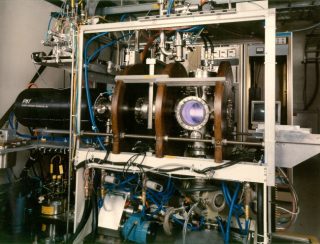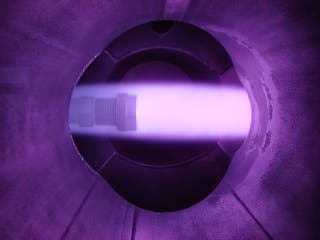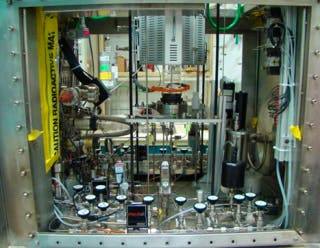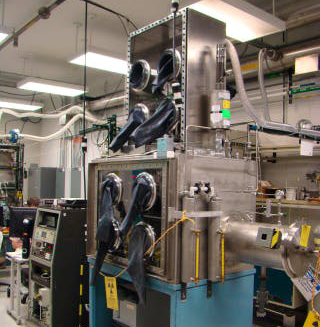The Safety and Tritium Applied Research (STAR) Facility
Fusion Safety
Following the decision to close the Tritium System Test Assembly facility at the Los Alamos National Laboratory, the OFES selected the INL as the home of their new tritium research facility in October of 2000.
This facility, now called the Safety and Tritium Applied Research Facility (STAR), is a DOE less than hazard category 3 facility, with the unique capability of handling radioactive and toxic materials.
Typical experiments in the STAR facility include the use of tritium, a radioactive isotope of hydrogen and a likely fuel for future fusion reactors, activated structural materials, such as tungsten samples irradiated in the High Flux Isotope Reactor (HFIR) at the Oak Ridge National Laboratory, along with other hazardous materials like beryllium, lithium, lead and fluoride salt compounds.
STAR allows researchers to develop and use small-to moderate-level tritium experiments that would be too burdensome to perform at institutions without tritium handling capabilities.
STAR Experiments
Tritium Plasma Experiment (TPE)
The Tritium Plasma Experiment (TPE) is a linear plasma device to accelerate deuterium and tritium plasma ions into metal target samples. The main focus of study at present is tungsten samples since tungsten high heat material is the most promising material for use in fusion divertors.
TPE test samples are first irradiated at the High Flux Isotope Reactor at ORNL to simulate fusion neutron damage. Then the samples are exposed to fusionrelevant plasma in TPE. The samples are examined using Nuclear Reaction Analysis (at the University of Wisconsin- Madison) to understand density profiles of deuterium and tritium inside the sample. Thermal Desorption Spectroscopy and Positron Annihilation Spectroscopy are also used to understand the retention of deuterium and tritium in the sample material. This information is used to understand the safety and operation of fusion reactors.
TPE can generate a maximum ion flux of 4×1022 ions/m2-s with ion temperatures between 50 and 200 eV. The safety limit for handling radioactive samples in the STAR facility is a dose rate of less than 10 μSv/hour. TPE can accept beryllium samples as well as other fusion metals such as steel or tungsten.



Tritium Gas Absorption Permeation (TGAP) Experiment
The TGAP experiment studies the solubility and permeation of tritium in molten lead-lithium. This liquid metal material is of interest since it can serve as both coolant and tritium breeding material in a fusion reactor. Understanding how the tritium (that would be bred in this coolant) interacts with the parent coolant is necessary to know that tritium fuel can be safely handled in a fusion reactor. TGAP injects a measured small quantity of tritium gas (e.g., 0.1 milligram) into a sample of liquid metal and measures the tritium that leaves the sample.


